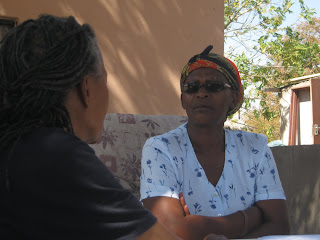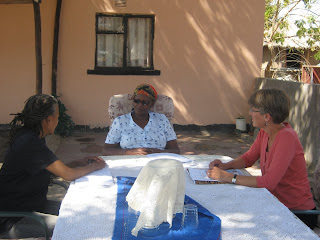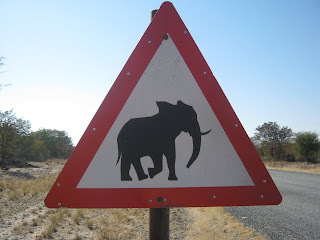
By my calculations, we (I) drove about 2500 kms during our five days away. That is only about 500 kms per day and for the most part that is about what it was, but still this is driving that takes great concentration, as noted, given the narrow two lane roads, occasional potholes, frequent animals (with constant reminders of the danger in the form of skid marks and carcasses on the side of the road), huge trucks, high speeds, constant passing, many villages requiring slowing to 80 kms or else, and so on and so forth. We have a hired Toyota corolla (with a memorable number plate) that I thought might be too small for our travels, though it is a luxury vehicle compared to what I usually have. It has proved to be very hardy!
Still we saw many interesting things along the way: sadly, we never saw any elephants crossing, but on our way back from Maun to Nata we did watch as a ‘herd’ of 18 zebra crossed the road in front of us! During our early morning driving the birds were our stubborn companions. Hornbills in particular do not want to get out of the way of oncoming vehicles, but they are too big to be ignored. We also saw guinea fowl that can do great damage to windscreens and doves and other birds.
When not driving through the pans on the Francistown Maun route we saw an array of trees including mapani, marula, and the fattest baobabs I have ever seen. Once near the pans the soil – and the termite hills – all turned white.
Coming out of Maun on our return we saw lots of ipelegeng: people engaged in government sponsored low wage temporary work, including painting red and white curbs, cutting grass along the side of the road, mending fences, digging trenches, and collecting trash. Indeed, Botswana has to be one of the cleanest places; all the compounds that we passed were neat and tidy as well. We also saw one small settlement where people were collecting grass into bundles to sell for thatching roofs or had made it into brooms.



 We don’t come to southern Africa to see animals, but since we did not get to visit the Nata Bird Sanctuary, go into the Okavango Delta or make it to our favorite Khama Rhino Sanctuary I thought maybe we should do a two hour game drive at nearby Mokolodi Nature Reserve on Sunday morning. We have been there on a couple of occasions in the past and have not been so impressed; indeed the Gaborone Game Reserve in your own car is often better. Anyway, the most pleasant surprise was that our guide was Vivian, who was our guide on our two visits to Khama Rhino Sanctuary in 2009. It was great to see her again! The hippos and rhinos eluded us but we did manage to see a whole lot of other animals and birds: impala, warthogs, wildebeest, guinea fowl, kudu, fish eagles, Egyptian geese, zebra, ostrich, giraffe and baboons. Wildlife photos courtesy of Kuno.
We don’t come to southern Africa to see animals, but since we did not get to visit the Nata Bird Sanctuary, go into the Okavango Delta or make it to our favorite Khama Rhino Sanctuary I thought maybe we should do a two hour game drive at nearby Mokolodi Nature Reserve on Sunday morning. We have been there on a couple of occasions in the past and have not been so impressed; indeed the Gaborone Game Reserve in your own car is often better. Anyway, the most pleasant surprise was that our guide was Vivian, who was our guide on our two visits to Khama Rhino Sanctuary in 2009. It was great to see her again! The hippos and rhinos eluded us but we did manage to see a whole lot of other animals and birds: impala, warthogs, wildebeest, guinea fowl, kudu, fish eagles, Egyptian geese, zebra, ostrich, giraffe and baboons. Wildlife photos courtesy of Kuno.


































